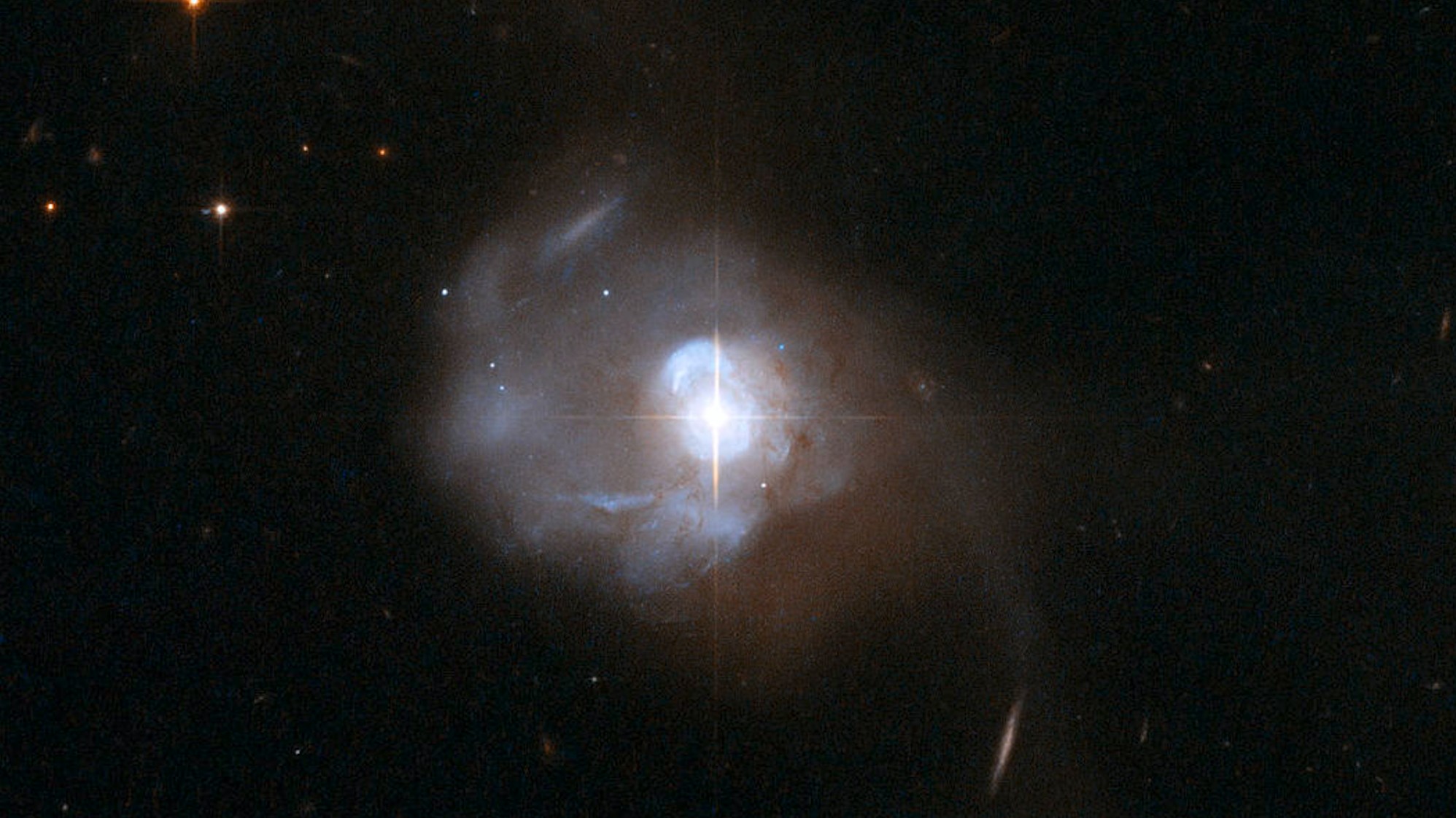Astronomers have spotted molecular oxygen in a galaxy far far away, marking the first time that this important element has ever been detected outside of the Milky Way. Motherboard reports:
This momentous “first detection of extragalactic molecular oxygen,” as it is described in a recent study in The Astrophysical Journal, has big implications for understanding the crucial role of oxygen in the evolution of planets, stars, galaxies, and life. Oxygen is the third most abundant element in the universe, after hydrogen and helium, and is one of the key ingredients for life here on Earth. Molecular oxygen is the most common free form of the element and consists of two oxygen atoms with the designation O2. It is the version of the gas that we humans, among many other organisms, need to breathe in order to live.
Now, a team led by Junzhi Wang, an astronomer at the Shanghai Astronomical Observatory, reports the discovery of molecular oxygen in a dazzling galaxy called Markarian 231, located 581 million light years from the Milky Way. The researchers were able to make this detection with ground-based radio observatories. “Deep observations” from the IRAM 30-meter telescope in Spain and the NOEMA interferometer in France revealed molecular oxygen emission “in an external galaxy for the first time,” Wang and his co-authors wrote.
- Motherboard notes that you couldn’t just inhale the molecular oxygen found in Markarian 231 like you would the oxygen on Earth. “This is because the oxygen is not mixed with the right abundances of nitrogen, carbon dioxide, methane, and all the other molecules that make Earth’s air breathable to humans and other organisms.”
Still, the discovery “provides an ideal tool to study” molecular outflows from quasars and other AGNs, the team said in the study. [Markarian 231 has remained a curiosity to scientists for decades because it contains the closest known quasar, a type of hyper-energetic object. Quasars are active galactic nuclei (AGN), meaning that they inhabit the core regions of special galaxies, and they are among the most radiant and powerful objects in the universe.] “O2 may be a significant coolant for molecular gas in such regions affected by AGN-driven outflows,” the researchers noted. “New astrochemical models are needed to explain the implied high molecular oxygen abundance in such regions several kiloparsecs away from the center of galaxies.”
